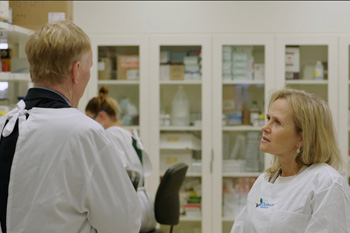In a global world, the future of science depends on strong and enduring international relationships.
According to Professor Sharon Lewin from the Doherty Institute, “Collaboration across borders in science is hugely important, especially when you're trying to tackle really big and important problems.”
Professor Lewin is one of several researchers highlighted in a series of six short videos about research collaboration in the Asia-Pacific region, produced by the Academy in partnership with the Australian Government Department of Industry, Science and Resources.
Across the themes of health, environmental sustainability and science solutions in developing countries, the series of videos emphasises the difference that collaborating makes to science and technology outcomes. It also shows us the value of removing barriers for scientific collaboration throughout the Asia-Pacific and celebrates the achievements of our region’s researchers.

For example, Professor Lewin’s work in finding treatments for hepatitis B was supercharged thanks to connecting with the International Coalition for the Elimination of Hepatitis B. The coalition linked researchers in different parts of the world, ensuring the same methods are used to study people receiving various treatments, and allowing for the best possible solutions to be found to cure this infectious disease.
Another important collaboration highlighted is the work of the Asbestos Diseases Research Institute in sharing Australia’s knowledge in asbestos removal, safety and disease with developing countries, some of which do not yet have bans on the dangerous substance. While Australia banned asbestos in 2003, its impact continues: 4000 Australians lose their lives to asbestos-related illness every year. In this video, Associate Professor Sonja Klebe, who leads the Asbestos Diseases Research Institute, says, “We have to take a leadership role for the region, given the experience that we have in that field, to help other countries avoid the problems we have experienced here.”
Each project outlined in the video series was made possible by the Regional Collaborations Programme. The programme, which closed this year, assisted Australian researchers and businesses to build stronger linkages in the Asia-Pacific region to support inclusive and sustainable economic growth and prosperity. The programme was a funding initiative of the Australian Government’s Global Innovation Strategy under the National Innovation and Science Agenda. It has been succeeded by the Global Science and Technology Diplomacy Fund, which has similar objectives.
As becomes obvious after watching these videos – whether they are in medicine, archaeology, biology or any other discipline – outstanding scientists don’t work alone.
Find out more about the Regional Collaborations Programme.
© 2025 Australian Academy of Science